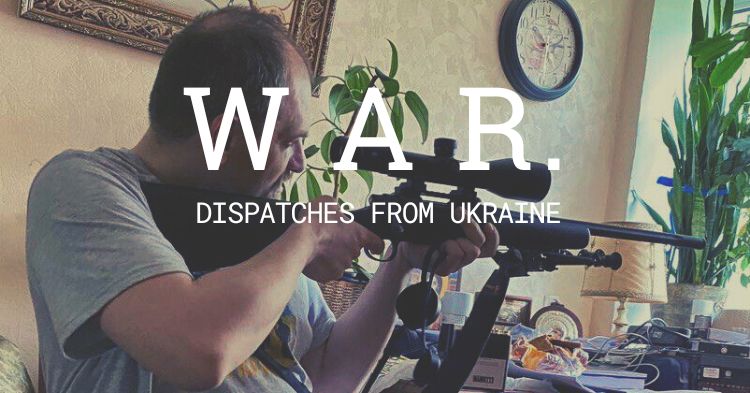The second part of Yuriy’s story about Russian ideology and motivation read: Ukrainian sniper-theologian tells why Russians are ready to die for Putin’s regime
We met Yuriy Chornomorets when he left his building accompanied by two Ukrainian soldiers in uniform, carrying a huge sniper rifle. As we later discovered this was a Barrett M107 which can strike at 2 kilometers, “a terror for politicians,” as Yuriy later called it, pondering why Putin is still alive.
“This huge tower built of bricks in the center of the park is good to test sights,” Yuriy replies after we note how beautiful the site is. The battered building containing Yuriy’s flat is surrounded by hundred-year-old oaks. As thick as several people straddled together, these oaks probably witnessed battles during the Cossack era, when Ukraine was a de-facto independent and highly militarized state, wary always of the constant danger of invasion. Yuriy with his cheerful tone, and philosophical hypotheses for Russian behavior, mixed with humor, looks precisely like one of those formidable Cossack warriors born of literary tales, except for bearing lethal 21st-century rifles.
Recalling grandfather’s shooting lessons: “Do nothing but be prepared to do everything.”
“Did you buy rifles before the war, or in the process?” we asked, pointing to five sniper rifles atop a huddle of bags with ammunition.
“Oh, that's a nice story. My wife said that if I buy a weapon the war will start. But we knew the war would start,” Yuriy replies. Already on 24 January, a month before the invasion, a Ukrainian colonel called Yuriy and said that personnel had received weapons. That was the first hint of impending war. Yuriy asked the colonel if took his children out of Kyiv; he replied that they were already in west Ukraine.
“And then I remembered how we were shooting all the time with my grandfather who made a 100-meter shooting range at school. He said then that ‘You should do nothing but be prepared to do everything.’
I used to train constantly until 2002 and then stopped for 20 years. However, before the invasion, I called Pavlo Haidai who, I knew, had been preparing for the war. He works in the cultural initiative Mizh vukhamy [Between the ears] that funds translations of philosophical works. Aristotle's Metaphysics [takes a thick book from the table] which together with Ibn Sina [Persian polymath during Islamic Golden Age] served as a support for my rifle. He helped me to buy several rifles.”
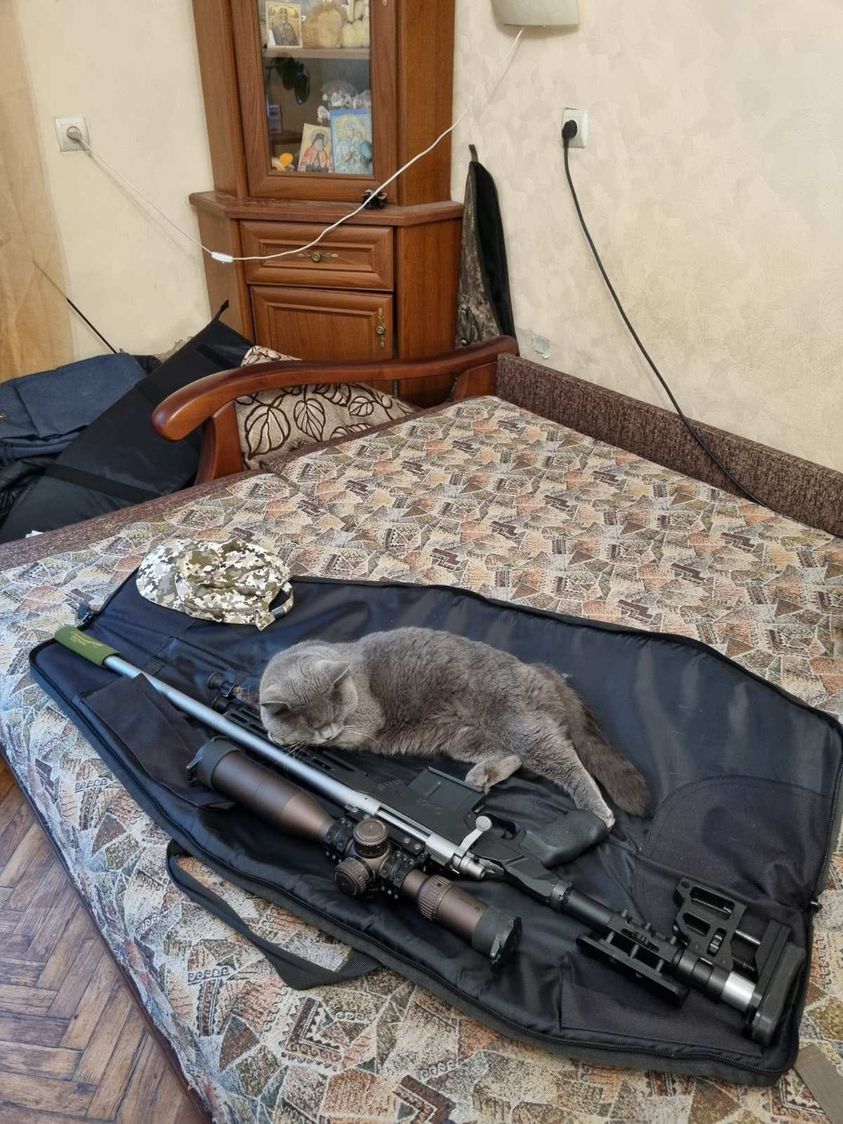
When the war began, Yuriy enrolled in the territorial defense of Kyiv's Holosiyiv District. When commanders saw he had his own sniper rifle, they enlisted him in the Aidar Battalion which was created as a volunteer formation in 2014 and is considered one of the most experienced Ukrainian units.
The first success of their Aidar detachment was to liquidate and capture a group of saboteurs who were approaching Kyiv from Obukhiv in the south. These saboteurs were recruited in the so-called LNR, the proxy republic which Russia created in 2014 in an occupied section of Luhansk Oblast. Yet, some saboteurs captured by Yuriy and his comrades spoke Ukrainian perfectly and pretended to bring aid. However, they had photos of bridges and military positions on their tablets.
After a few days in Kyiv, in early March, Yuriy’s detachment was redeployed to Horenka, a village on the right bank of the Irpin River that together with Irpin city and Moshchun village became Kyiv's north-western shield.
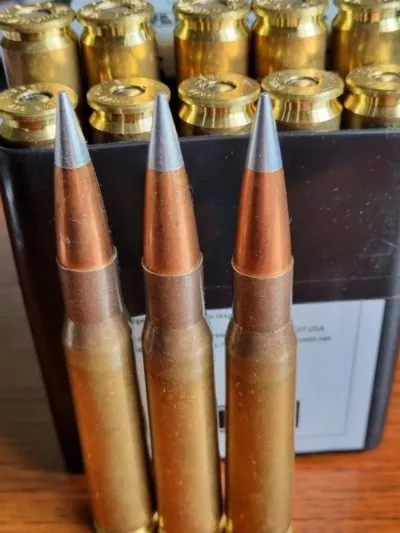 On his Facebook page, Yuriy writes about his volunteering activity, ammunition and rifles that he has provided for the frontline. While there are constantly new needs, he also posts requests for financial support. You can help Yuriy by donating to the accounts on his Facebook page or his Pay Pal account: [email protected]
On his Facebook page, Yuriy writes about his volunteering activity, ammunition and rifles that he has provided for the frontline. While there are constantly new needs, he also posts requests for financial support. You can help Yuriy by donating to the accounts on his Facebook page or his Pay Pal account: [email protected]
“Hunting” in Horenka, on the frontline along the Irpin River
The bridge to the Irpin River was already blown up when the unit arrived at the Horenka village
. The entire forest to the northwest of Kyiv, 30 km along the Irpin, was protected at that time only by the battalion of the 72nd brigade, the battalion of the National Guard, and the battalion of “others,” Yuriy says.
These “others” included volunteers of territorial defense like Yuriy, border guards who retreated from Chornobyl, Security Service fighters driving “cool” SUVs, and more. This was the main defense line that blocked Russians from approaching Kyiv.
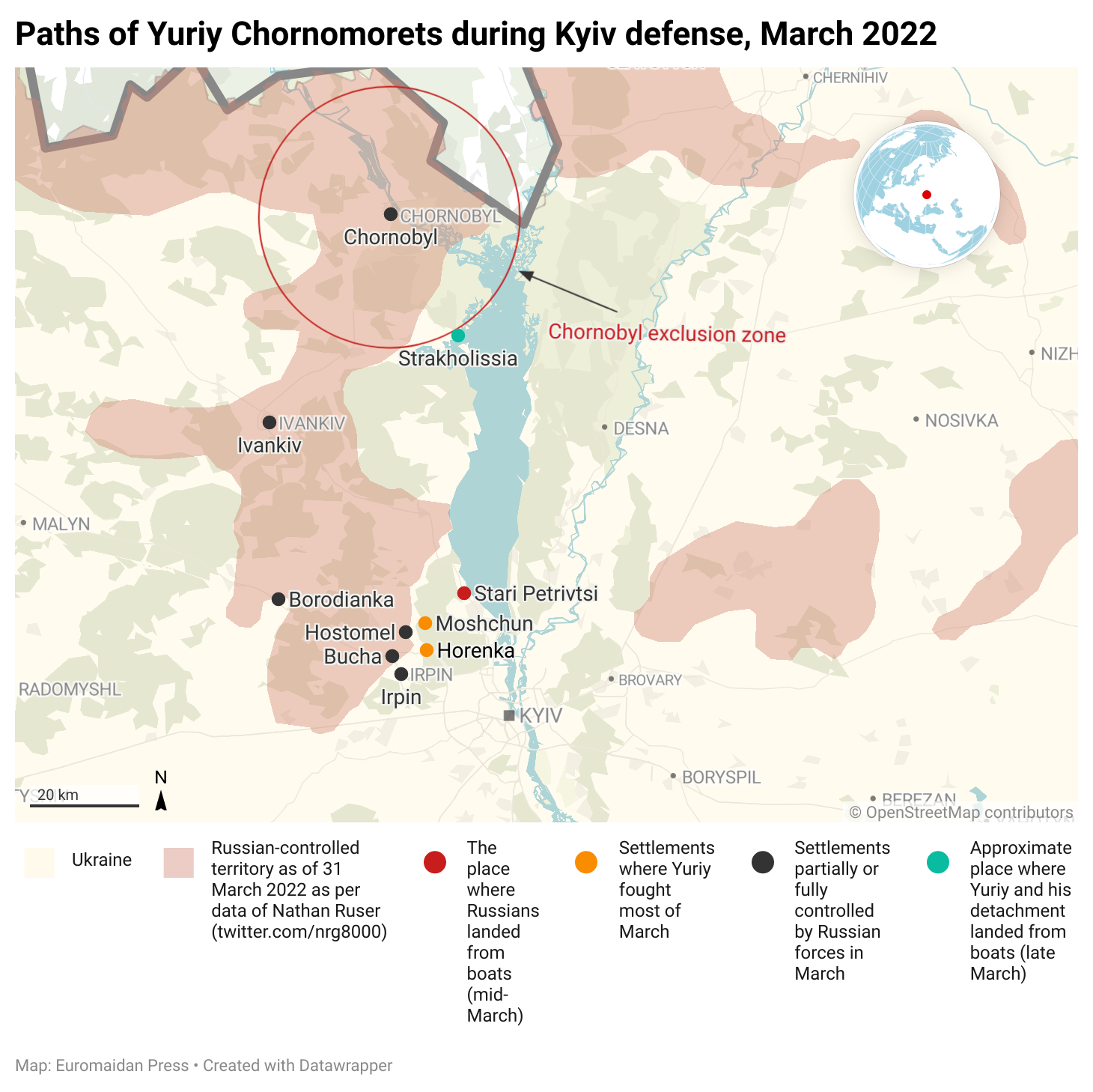
“The first line of trenches should be left empty,” Yuriy claims. “Why? The Russians had no idea that there was nobody there, they shelled them around the clock. Therefore, although there were orders to go to the first line, we quickly convinced everyone that we would sit in the second line, and only when the Russians brought a pontoon across Irpin, then we jumped to the first line. Russians also shell the crossroads. There was such a crossroad in Horenka, which was always shelled, and it was imperative not to go there at all. Two guys in my platoon went there and died.”
Many people think that “sniping” is mainly about shooting. However, Yuriy says, the sniper's first role is reconnaissance. While observing the terrain from high spots – hills or rooftops -- Yuriy told his comrades about suspicious persons who could be a sabotage group and had to be checked. Once he detected a group of Russians who were hiding in an abandoned factory. Finally, when it comes to shooting, Yuriy says it is necessary to look for ‘fat’ targets, e.g., colonels or other commanders, to sow panic.
“You just have to look for the people brandishing their hands and talking more,” he says.
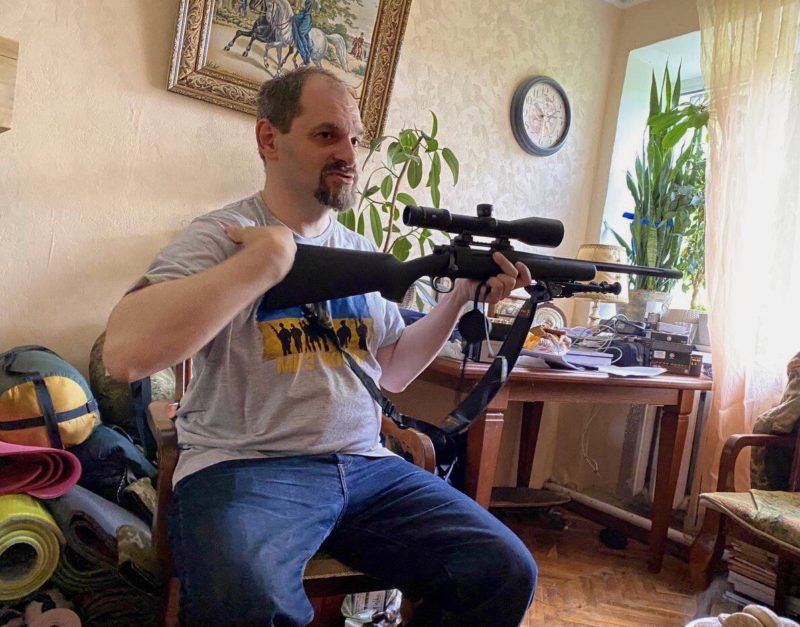
Russian troops conducted many landing attempts but often with poor coordination.
“Russians landed in a factory in our rear and then they didn’t know where to go. They were under constant fire, they couldn’t go anywhere. And then they saw some warehouses and decided to set them on fire. Why? I can’t get it, but heavy smoke with chemicals went straight at them back to the factory, instead of going at us. They then bombed the house opposite the factory, which seemed suspicious to them. It was just a pony stable. Those ponies were running around us looking for grass.”
In Horenka, there were no hot food supplies so Yuriy’s unit cooked for themselves. He recalls that in a pause between fighting, he and some other soldiers went to the village where only 15 people remained and a lot of abandoned chickens. So they decided to prepare two buckets of chicken soup for the frontline.
“Everyone thought that I’m a professor and don’t know how to do anything, how to cook from real, not pre-prepared supermarket chickens. They were wrong.”
Yuriy jumps out of the room and comes back with a hot pot of soup that contains more meat than soup. “Is this lunch? Just a snack,” Yuriy said when we tried to explain that we had our lunch recently.
“We had one boy who talked too much, so nobody liked to be with him. So I said to send him to the kitchen when it was my turn. He cooked really well. At night we started ‘hunting’ together with him. The terrain was illuminated by moonlight and we saw Muscovites really well. We worked without thermal imaging.”
He shows his light Remington sniper rifle with which he worked near Horenka.
“Up to 400 meters is the ‘100%’ death for the katsap [derogatory for 'Russian']. If the distance is longer, you need to aim well.”
Being rescued by a Grad
Russians were acting Soviet-style, conducting chaotic shelling, Yuriy says. However, once, they decided to reach the rear of Ukrainian troops. They took many boats and landed from the Dnipro reservoir between Stari Petrivtsi and Novi Petrivtsi, north of Kyiv. They captured the northern part of the very same forest where photographer Maks Levin was killed.
Yuriy and his platoon were redeployed to Moshchun
to guard this line of defense and prevent them from approaching Kyiv. There were lakes because of dams on a small stream. Ukrainian troops blew up those dams and the small stream became a formidable obstacle to approaching Kyiv from the north. There was also a huge cottage with deers near those lakes where they were holding the defense. “Picturesque,” Yuriy recalls.
“Russians thought for a long time where to set the pontoon. And at night they quietly threw a pontoon right in front of us and began to cross. We have a guy Lam who was surrounded many times in 2014 in the Donetsk Oblast, was in captivity, and barely survived. And now he says: ‘It's the end for us, 15 minutes of battle.’
But then suddenly our MLRS Grad without headlights came down, 16 missiles boom-boom-boom and that’s the end for Russians, we even didn’t have to shoot. Yet, we started wondering why the MLRS didn’t destroy the pontoon because usually they do… And suddenly we hear the rumble of a tank column. Lam is already saying 'five minutes of battle.' But it turns out that these are our tanks from 72th brigade which passed us from the rear and rapidly crossed the water by that Russian pontoon and entered their bank. In this way, the northern part of the forest was liberated."
Yuriy praises artillery fighters of the 72nd brigade as “highly professional people,” hitting targets with every shell.
“Russians were shelling 5-6 times more, here, and there, at houses, chaotically, without any logic. And our artillery is silent, silent, and when Ukrainian artillerymen understand where Russian shells are flying from – boom-boom and goodbye. They see the Russians are relocating tanks. Bang-bang – five tanks are burning. The Russians then begin in response boom, boom, boom, shelling everything around, the entire frontline, from all the barrels they have. They are firing because they lost five tanks and must take revenge.”
Motivated newcomers can grow into "monsters" in a professional unit
The Kyiv territorial defense fought together with the 72nd Regular Brigade and had few casualties. Also, Yuriy’s friends from the Carpathian Sich volunteer battalions advanced successfully with the 92nd Brigade to the north of Kharkiv. However, the Territorial Defense of Cherkasy came to the front with a brigade that failed to support them by artillery, Yuriy says. And finally, the brigade failed to destroy Russian tanks when they moved into the flank because the commander of the brigade said he had a limit of 30 shells per day.
“What f*cking limit! You see Russian tanks, they are advancing and shelling on trenches. Why should people with Javelins and Panzerfaust stop these tanks from a short distance risking their life if you have artillery. You destroy them and then think where to get shells...”
It all depends on the quality of the brigade. Since most Ukrainian brigades are good, newcomers to the army seeing a machine gun for the first time can also quickly join the fight, Yuriy says.
“There were students who lived nearby who enrolled in the territorial defense. Everyone thought they were cry-babies, and they turned out to be monsters, no worse than the SBU special forces. Because they had common sense, determination and nothing to fear.
When the shelling and the chaos of the battle starts, if you start fearing, you are already dead. Not being afraid is key. Just keep at it and hope to be lucky.
And we had fantastic results. For example, there were those who walked 60 kilometers through enemy territory to bring ammunition to encircled troops. They just loaded backpacks and walked. Yes, we had losses, but there were also those who went all this way and came back alive and well. I think only the American army can do something similar.
We could have quietly reached Moscow through the enemy's rear, if such a task was set. I think this solution is long overdue: to go there, shoot, and return. Because it has all dragged on for too long. He [Putin] comes out of the bunker sometimes, and a Barrett can shoot even at 2.5 kilometers.”
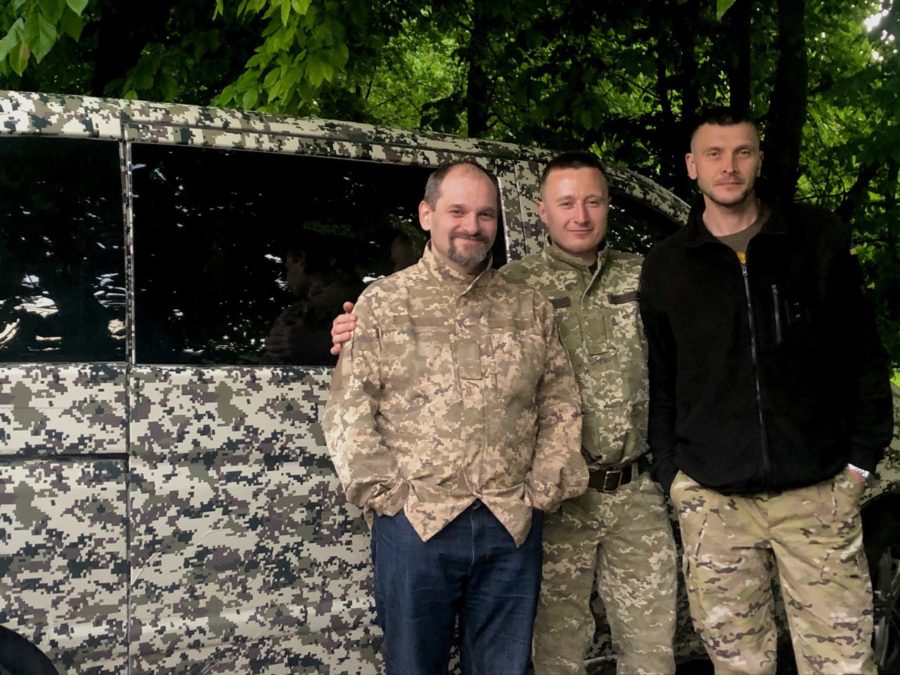
Fighting in the Chornobyl zone with Trumpists from the Foreign Legion
After the liberation of the forest near Moshchun, Yuriy’s detachment was redeployed to the rear. Lam said he knew people who lived in the Chornobyl exclusion zone.
“Russians came here by boats, so why can't we come to them by boats?” he asked.
They sailed 10 people in a boat to the north of the Dnipro reservoir. There they met volunteers from the Foreign Legion. Five Americans, one Brit, and one Lithuanian.
“They spoke English and told us when we came: ‘Look, the gangsters have arrived. When will the regular army come?’ The American fighters were well-equipped, with their own sniper rifles and machine guns. One of them even had a Stinger, as he said ‘his own, bought for dollars.' There indeed was a period when everyone could bring any weapons across the border.
In general, all these Americans that we met at the Chornobyl zone turned out to be Trumpists. And when you tell them that Grandpa Biden also seems to be a conservative with balls, they say it is not the same. They have an ultra-Republican worldview, which determines that there are points of evil that should be fought. They saw that there was a problem somewhere, that help was needed, and they came.
The British man was cool. He knew how to work on everything from sniper rifles to Stingers. He looked very young but had been fighting since 1992, Desert Storm, in Afghanistan. There was one Georgian who later died. He fought everywhere against the Russians wherever there was a war. The Azerbaijani guy also came alone, although in general Azerbaijanis do not go to war [in Ukraine], and the Latvian came with his own weapons. They are all wonderful people and very highly professional.
Their only drawback is that they do not ask for help. They will drag around boxes with machine gun ammunition themselves, They will collapse under them, but not ask for help, they need to be offered it. We usually just say 'Hey, help' when there are boxes to be carried. But after you offer to help, they are very happy. Very brave guys.”
Together with international fighters and soldiers from the volunteer battalion Carpathian Sich, Yuriy’s detachment went towards the Chornobyl exclusion zone which they entered through an abandoned village. They had a scout among them with a tablet from the General Staff. There was no mobile connection in the area except for Sukholuchia village, where you could connect from the second floor. Russians had a lot of observation posts and fortifications in the area.
“We proposed to blow up a bridge near Chornobyl so that Russians would not be able to escape. Some of the commanders objected. Finally, we agreed to sleep the night and go in the morning to do the job.”
However, in the morning it was already late. While they were sleeping, the Russians escaped.
"We spent the night in the house of locals near Chornobyl. They have a habit of burning firewood so much that it's hotter than in a sauna. But I have heart problems and it was difficult to sleep there."
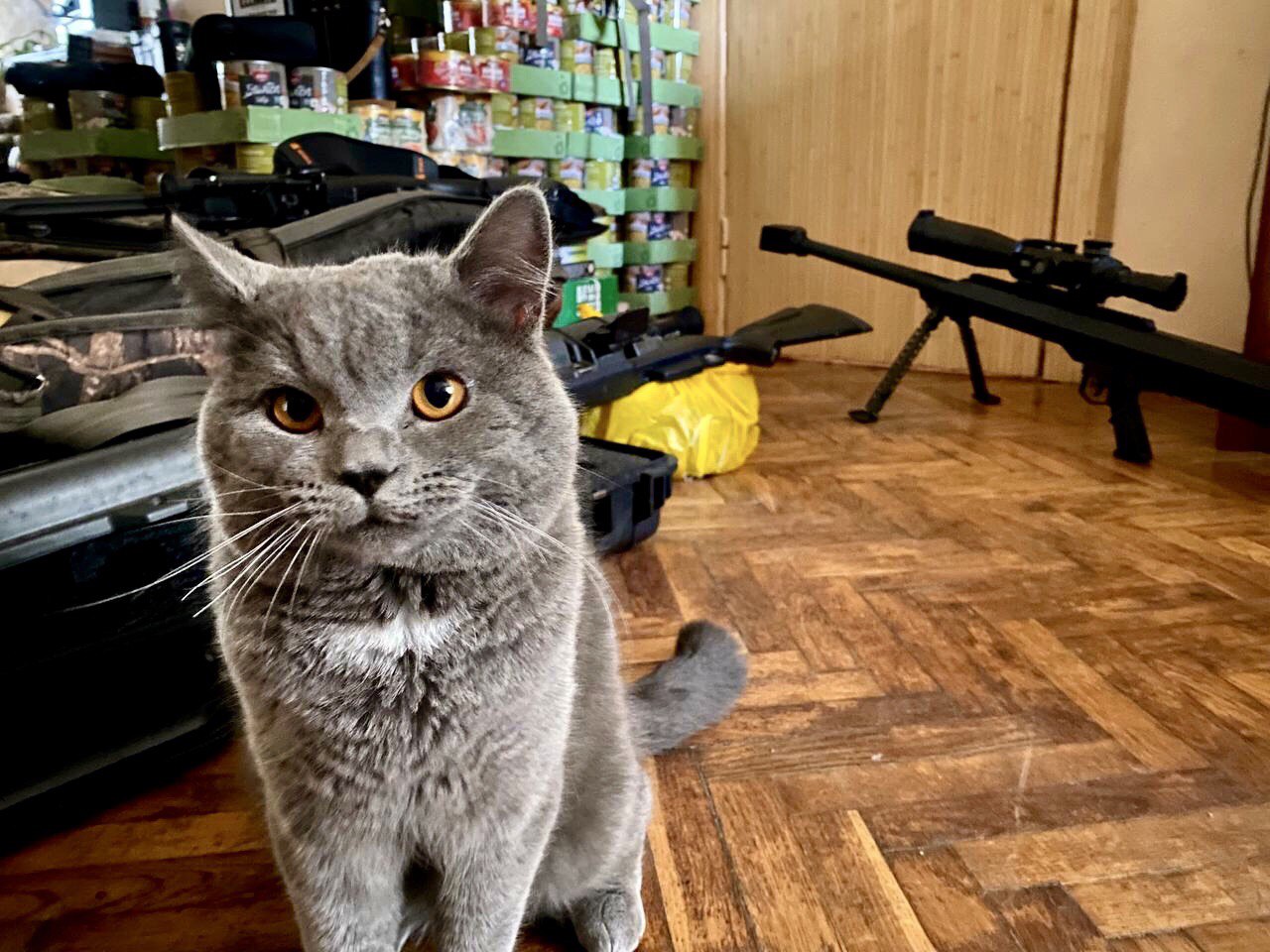
Then they found the location of Russian Iskanders that shelled Kyiv and secret Russian documents which they passed to counterintelligence.
“And we came to the sad conclusion that if a brigade was deployed to build a defense line along the Teteriv river [5 km south of Chornobyl zone] and blow up bridges before the Russian attack, the horrors of Bucha and Irpin would never have happened. They could have taken Hostomel by landing at most, but we would quickly have killed them there.”
Russia turned Bucha into one big torture chamber. Dispatch from Ukraine
Yuriy says that this bridge was supposed to be blown up immediately after Russia's invasion on 24 February, but the Russians were quicker. They took bridges really fast and moved by columns. This could have been prevented if at least one brigade was there to make a "Mannerheim Line" in the swamps near the Teteriv River.
“Though it was easier for us to repel the Russians in Irpin and Bucha from the military perspective, they managed to conduct all those atrocities [in the suburbs of Kyiv]. All of us were frustrated with our 'dear authorities' who believed Russians wouldn’t attack from Belarus.”
Three tons of canned food as a Protestant ethic
Rear services gave Yuriy’s unit two bags of food to Chornobyl: 12 cans of stewed meat and a huge bunch of sweets. This was obviously not enough.
"I called a Protestant from Zakarpattia – Valeriy Fedoranych, who once offered to help. I said that we need a lot of stewed meat. And he loaded a truck with 3 tons of food and sleeping bags. After Chornobyl, we gave half to special operations forces near Kharkiv. My house is still full of canned food.”
Yuriy shows a hill of cans near the wall, a small part from that 3 tons that still wasn’t deployed to the frontline.
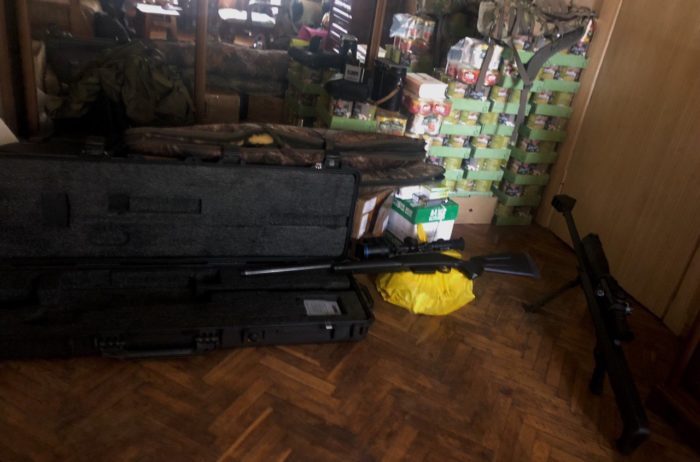
‘’It was their local stew, the whole family cans it. It is a Protestant ethic that you must serve the people. There is a war and the soldiers needed help, so they provided it. If you are a real fighter, you'll eat a can; if you are a cry-baby, you'll eat half."
Volunteering by procuring sniper rifles
After a week in the Chornobyl zone, Yuriy felt ill because of his heart and, as he says, radiation impact. Their group immediately headed for Kharkiv but he remained in Kyiv to procure the necessary supplies for them. He bought Blaser and Barret sniper rifles and other weapons that could only be procured from specialized stores.
“Americans supplying Barret 107A sniper rifles was a huge help for the Ukrainian army. Why? Because sniper fire allows you to push the enemy into the trenches quickly, like machine gun fire. However, many military regiments have a shortage of machine guns of all types and the fire of a sniper group can replace machine gun fire. There should be a sniper for every 10 people in the regiment.”
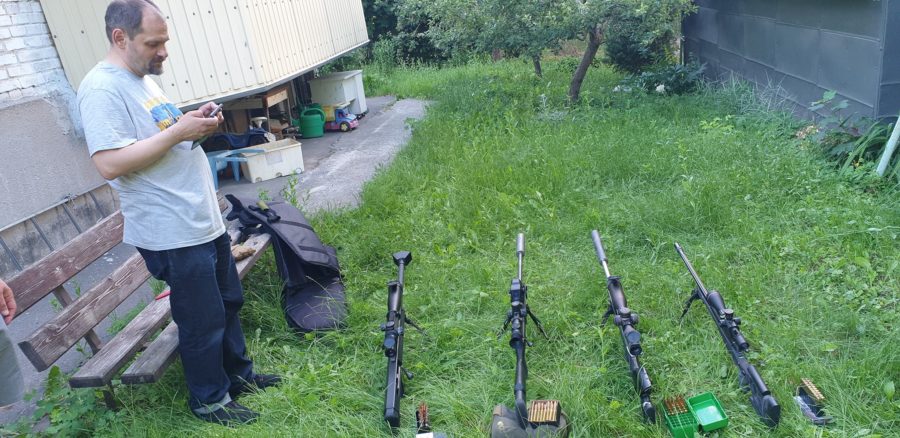
Some military men were calling Yuriy and asking to find bullets for a Ukrainian rifle analogous to a Barret sniper rifle. His first order was for snipers from the Azov regiment stationed near Zaporizhzhia. Ukrainians were retreating in that direction until Azov came to reinforce them, Yuriy said. The bullets cost UAH o.5 mn ($17,000) but people managed to raise the sum in three days. Then another guy called, asking for sniper bullets. And so Yuriy’s way as a volunteer started.
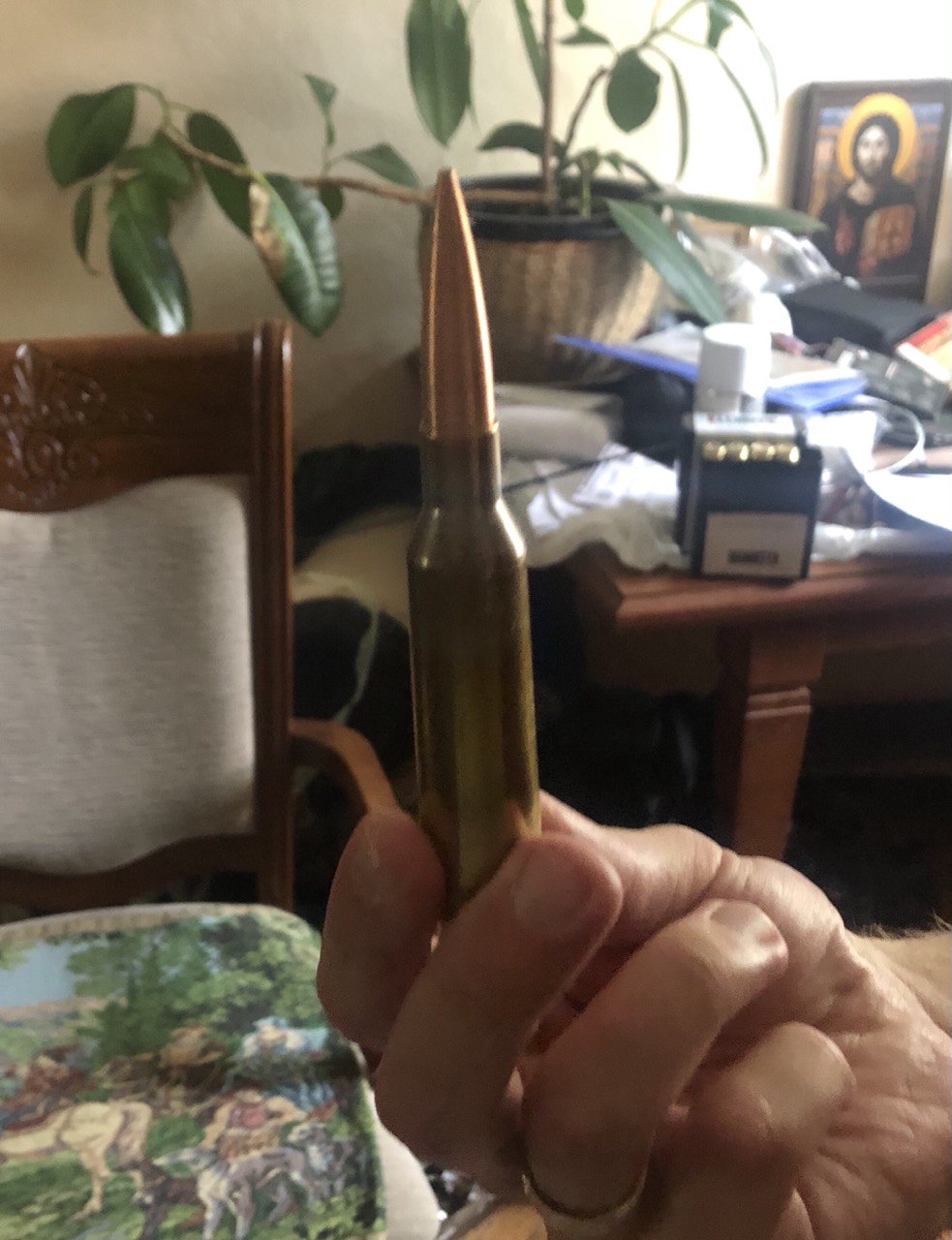
“You come to Ibis [military shop]. They answer that they have only ten pieces left of this type of cartridge. I say it's for my nephew on the frontline. A long silence and they then say 'OK.' So we got a bunch of ammunition. And then sometimes we come with a partner and the Ibis director asks: ‘Whose nephew is that?’ and we say ‘Both of ours." He laughs. Well, there really is one nephew, to whom we got ammunition – he is fighting in Azov.
There was our sabotage group with a sniper. They were returning from a mission in the enemy's rear, almost surrounded, but came out successfully. And he called me, saying 'I have 27 rounds left and need at least 100. Take my salary, just bring the cartridges.'
So I came to Ibis, and ask for 500 rounds. They answer that they have only 330. I took that and in another store I bought another 600. We loaded up the car, put medicine on top and went to Sloviansk. Soldiers ask at checkpoints 'Where are you going?' We say we are bringing medicine. Because it takes a long time to explain what kind of ammunition, without the accompanying documents.
We arrived at Kulchytskyi's battalion, and the cool guys were there. I would say top-level professionals. They grabbed those cartridges like children grab candy. 'We thought 100 rounds would come,' they say -- and we brought them entire boxes. And on top of that -- bulletproof vests, thermal imagers. Then we asked them what they had and what they didn't have, and returned later with various camouflage items for snipers."
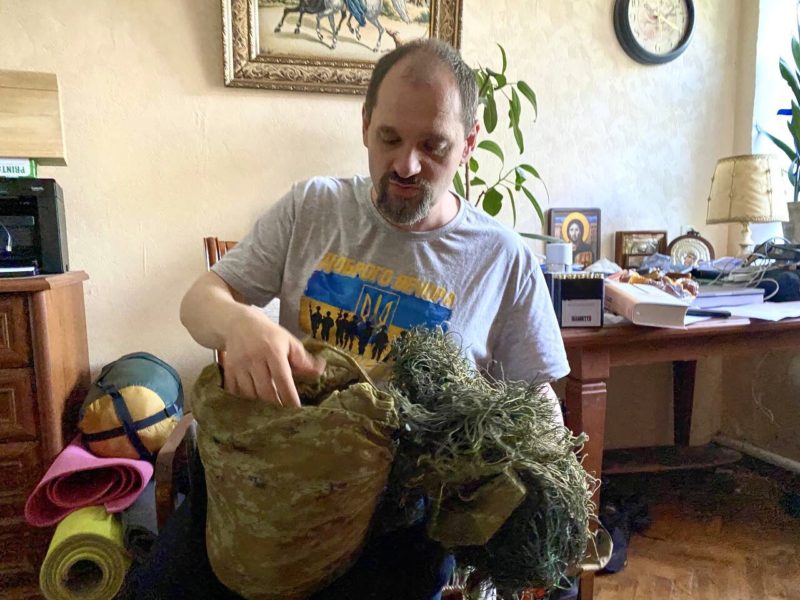
Yuriy said he didn’t think it was even possible to find proper ghillie suits for snipers in Ukraine. However, it turned out that girls and young women are now sewing sniper ghillie suits for each type of environment from special threads. This includes camouflage for the rifle, the head, face, as well as clothes. And of course tactical gloves with slits for fingers, because snipers should have soft touch, which is very important.
https://twitter.com/EuromaidanPress/status/1515799786091425793
"I know two people who owned a construction company and went to shoot paintball for teambuilding. Before the war, they bought weapons for the company, because they understood that there would be a war, and then created a whole platoon from this company. These are people who knew a lot, and now they have recruited those who know even more. Once they call, they say: 'Yuriy, get us a Stugna [Ukrainian-produced anti-tank gun], we have a man who can shoot from it.' They think I can procure anything, but I actually can't."
“These all are backpacks with bullets.” Yuriy shows a pile of backpacks with hundreds and thousands of bullets of different calibers for sniper rifles. Five sniper rifles stand near the opposite wall of the room. Part of them belong to Yuriy while the ‘extra’ ones will go to the frontline. His team is constantly searching for good rifles to be given to the army constantly. They monitor shops and whenever a rifle at a “not crazy” price appears, they buy it.
Related:
- How to make sanctions really painful for Russia, immediately
- Escape from Mariupol. “I begged God to let me die quickly!”
- Imagine your city under siege with no electricity. I lived through it in Ukraine
- “My name was on Russia’s kill lists,” Mariupol journalist who joined territorial defense says

